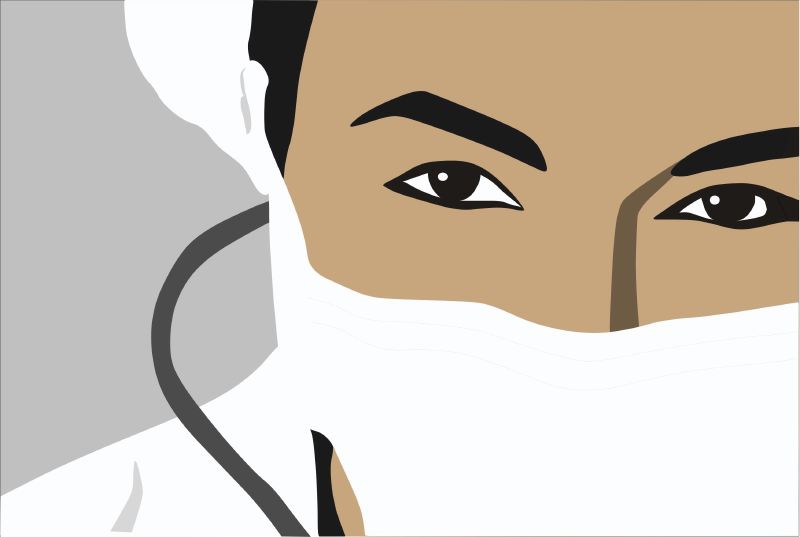
Our intentions may be to engage in more self-care, develop a better LIFE-work-balance, and learn about ourselves in an “examined life”.
Physician burnout is a pervasive issue, affecting the mental health and well-being of doctors worldwide [1]. The long hours, high-stakes decision-making, and emotional toll of patient care contribute to a heightened risk of burnout [2].
Recognizing and addressing these issues is crucial not only for the individual well-being of physicians but also for the overall quality of patient care.
Therapy and coaching represent two distinct yet complementary approaches to addressing the challenges physicians face. Therapy, often associated with the field of psychology, involves a licensed therapist guiding individuals through a process of self-discovery, healing, and personal growth [3]. It is rooted in exploring the past, understanding patterns, and addressing emotional and psychological issues.
On the other hand, coaching (life coaching, performance coaching, executive coaching, etc) is a more future-focused, action-oriented approach aimed at helping individuals achieve specific goals and maximize their potential [4]. While therapy delves into the roots of problems, coaching seeks to enhance skills, foster resilience, and optimize performance in various aspects of life, including career and personal development.
Therapy for physicians offers a safe space for exploring deep-seated issues, traumas, and emotional challenges. It provides a structured environment for introspection and healing, promoting long-term mental health [5]. However, therapy may sometimes be time-intensive, with a potential stigma attached to seeking mental health support within the medical community [6].
Coaching, on the other hand, is action-oriented, offering physicians practical strategies to navigate challenges, improve work-life balance, and enhance their overall effectiveness. It is often perceived as a more forward-looking and solution-focused approach [7]. However, coaching may lack the depth needed for addressing complex psychological issues that could be at the root of burnout.
In terms of accessibility, coaching is generally more flexible and less stigmatized, making it an attractive option for physicians with busy schedules and concerns about professional image. Therapy, while valuable, may require a more significant time commitment, potentially impacting work schedules.
Aspect | Coaching | Therapy |
Focus | Future-oriented, goal-driven | Past-oriented, exploring emotions and roots |
Purpose | Enhancing skills, achieving goals | Healing, self-discovery, personal growth |
Approach | Action-oriented, solution-focused | Insight-oriented, addressing psychological issues |
Time Commitment | Typically shorter, more focused sessions | Can be longer-term, addressing deeper issues |
Accessibility | Generally more flexible, less stigmatized | May have stigma, potential time-intensive |
Stakeholder Image | Often perceived as career development support | May be associated with mental health treatment |
Suitability | Effective for goal achievement and skill enhancement | Effective for deep emotional healing and self-discovery |
Examples of Providers | Career coaches, executive coaches, physician coaches | Psychologists, psychiatrists, licensed therapists |
The choice between therapy and coaching for physicians is not a one-size-fits-all decision. Rather, it depends on the individual needs, preferences, and circumstances of the physician seeking support. Both therapy and coaching play crucial roles in addressing the multifaceted challenges of physician well-being.
The choice between therapy and coaching for physicians is not a one-size-fits-all decision. Rather, it depends on the individual needs, preferences, and circumstances of the physician seeking support. Both therapy and coaching play crucial roles in addressing the multifaceted challenges of physician well-being.
A combination of the two approaches may provide a comprehensive strategy for promoting mental health, resilience, and professional fulfillment among physicians.
As the conversation around physician well-being continues to evolve, it is essential to break down the barriers that prevent individuals from seeking support. Whether through therapy, coaching, or a combination of both, providing physicians with the tools to navigate their challenges is a crucial step toward fostering a healthier and more sustainable healthcare system.
[1] Shanafelt, T. D., et al. (2017). Changes in Burnout and Satisfaction With Work-Life Integration in Physicians and the General US Working Population Between 2011 and 2017. Mayo Clinic Proceedings, 94(9), 1681–1694.
[2] Dyrbye, L. N., et al. (2014). Burnout and Suicidal Ideation among U.S. Medical Students. Annals of Internal Medicine, 160(5), 336–346.
[3] American Psychological Association. (n.d.). Understanding Psychotherapy and How It Works. Retrieved from https://www.apa.org/ptsd-guideline/patients-and-families/psychotherapy
[4] International Coaching Federation. (n.d.). About Coaching. Retrieved from https://coachfederation.org/about
[5] Norcross, J. C., & Lambert, M. J. (2018). Psychotherapy Relationships That Work III. Oxford University Press.
[6] Henderson, A. (2019). A Grounded Theory of Professional Identity Formation in Physician Assistants. Journal of Physician Assistant Education, 30(4), 210–214.
[7] Grant, A. M. (2003). The Impact of Life Coaching on Goal Attainment, Metacognition and Mental Health. Social Behavior and Personality: An International Journal, 31(3), 253–264.
